Accounting Systems and Processes: Financial Reporting and Analysis
VerifiedAdded on 2020/04/07
|29
|1869
|36
Homework Assignment
AI Summary
This assignment focuses on accounting systems and processes, covering various aspects of financial reporting and analysis. It includes detailed answers to questions on topics such as cell referencing in Excel, displaying negative numbers, separating data entry and report areas, utilizing IF functions, and understanding periodic inventory systems. The assignment also explores bad debt estimation methods, the role of accounts receivable in evaluating financial position, and provides an analysis of Wesfarmers' financial statements, including its statement of comprehensive income, dividends, earnings per share, return on equity, and risk mitigation strategies. Additionally, it includes calculations of working capital ratios and provides a recommendation for investment based on the analysis. The document also references several accounting research papers.
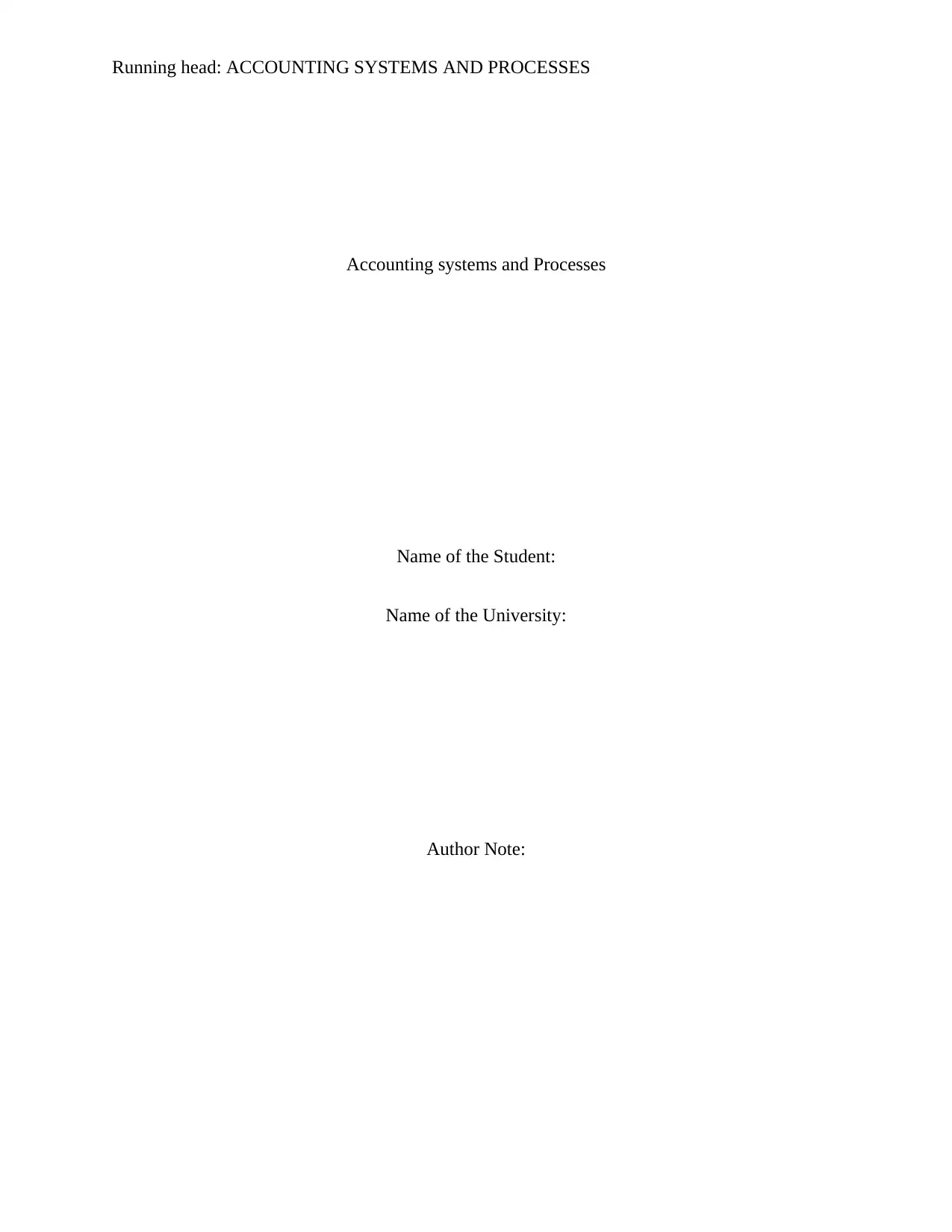
Running head: ACCOUNTING SYSTEMS AND PROCESSES
Accounting systems and Processes
Name of the Student:
Name of the University:
Author Note:
Accounting systems and Processes
Name of the Student:
Name of the University:
Author Note:
Paraphrase This Document
Need a fresh take? Get an instant paraphrase of this document with our AI Paraphraser
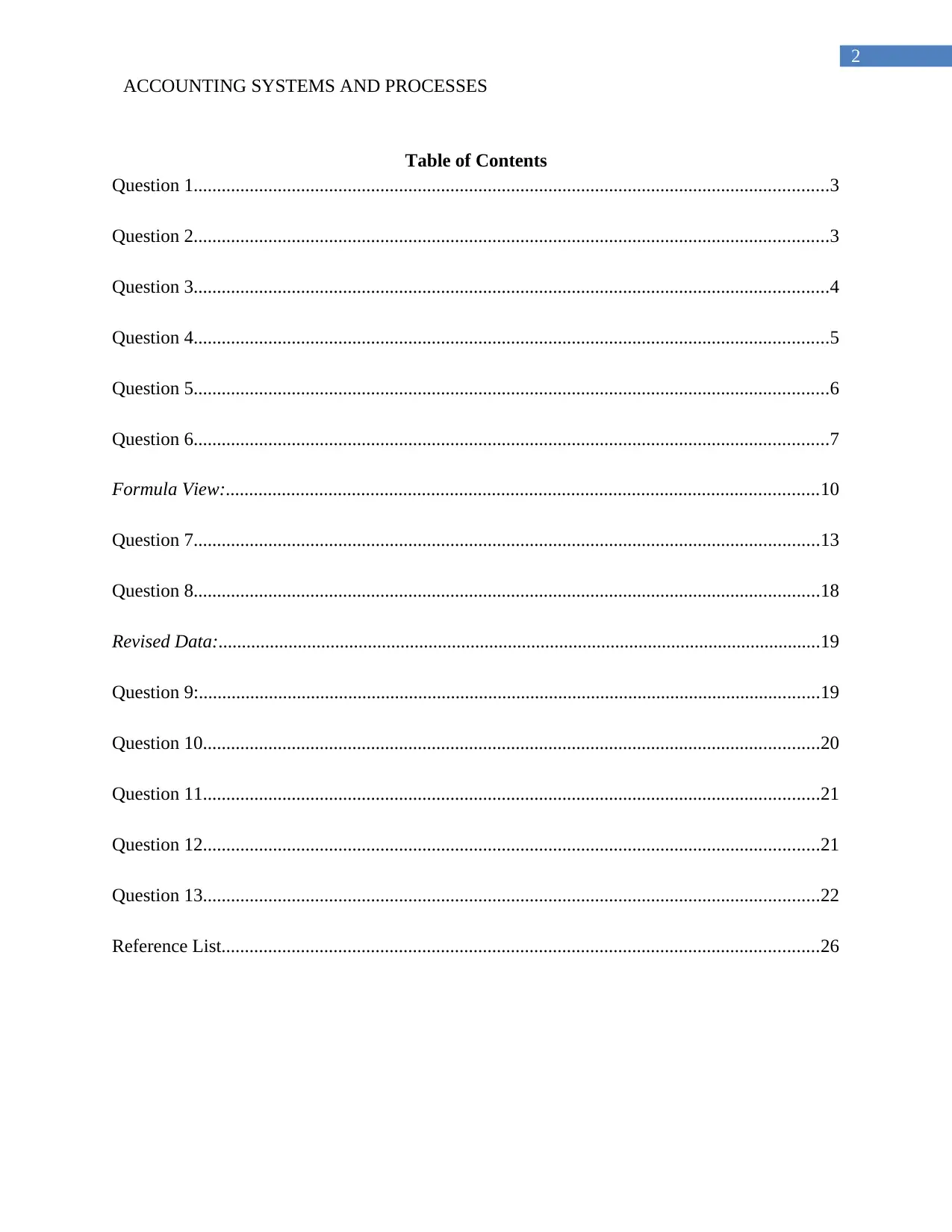
2
ACCOUNTING SYSTEMS AND PROCESSES
Table of Contents
Question 1........................................................................................................................................3
Question 2........................................................................................................................................3
Question 3........................................................................................................................................4
Question 4........................................................................................................................................5
Question 5........................................................................................................................................6
Question 6........................................................................................................................................7
Formula View:...............................................................................................................................10
Question 7......................................................................................................................................13
Question 8......................................................................................................................................18
Revised Data:.................................................................................................................................19
Question 9:.....................................................................................................................................19
Question 10....................................................................................................................................20
Question 11....................................................................................................................................21
Question 12....................................................................................................................................21
Question 13....................................................................................................................................22
Reference List................................................................................................................................26
ACCOUNTING SYSTEMS AND PROCESSES
Table of Contents
Question 1........................................................................................................................................3
Question 2........................................................................................................................................3
Question 3........................................................................................................................................4
Question 4........................................................................................................................................5
Question 5........................................................................................................................................6
Question 6........................................................................................................................................7
Formula View:...............................................................................................................................10
Question 7......................................................................................................................................13
Question 8......................................................................................................................................18
Revised Data:.................................................................................................................................19
Question 9:.....................................................................................................................................19
Question 10....................................................................................................................................20
Question 11....................................................................................................................................21
Question 12....................................................................................................................................21
Question 13....................................................................................................................................22
Reference List................................................................................................................................26
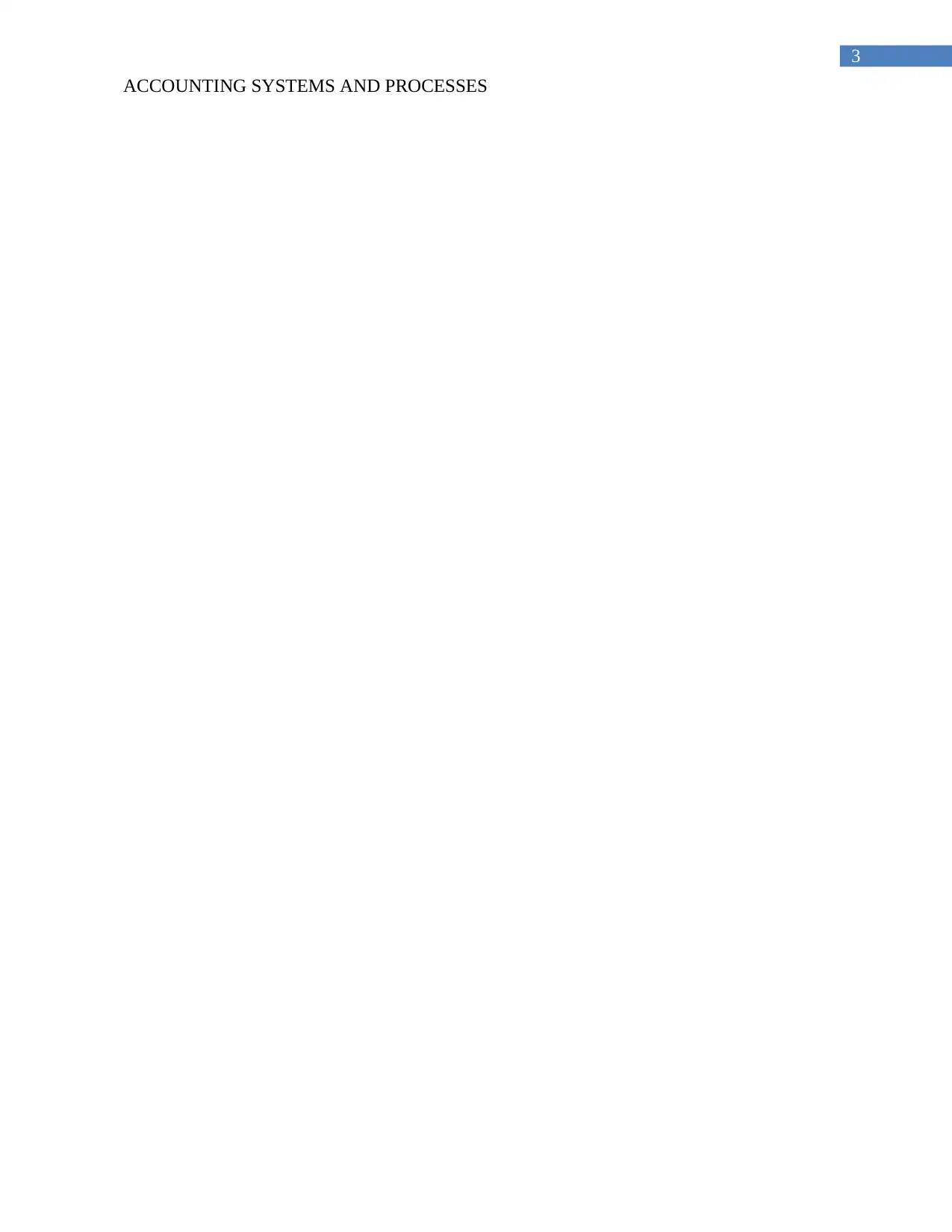
3
ACCOUNTING SYSTEMS AND PROCESSES
ACCOUNTING SYSTEMS AND PROCESSES
⊘ This is a preview!⊘
Do you want full access?
Subscribe today to unlock all pages.

Trusted by 1+ million students worldwide
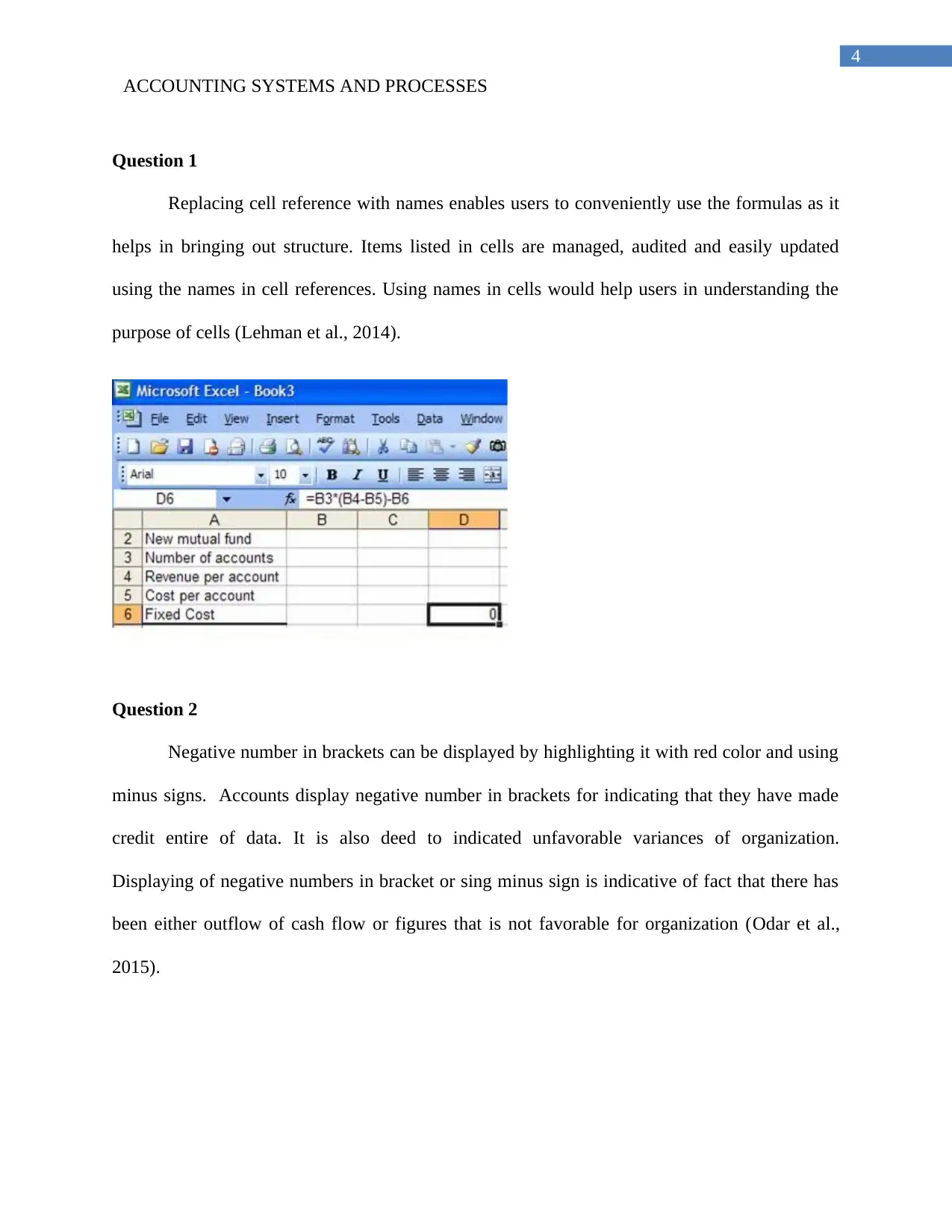
4
ACCOUNTING SYSTEMS AND PROCESSES
Question 1
Replacing cell reference with names enables users to conveniently use the formulas as it
helps in bringing out structure. Items listed in cells are managed, audited and easily updated
using the names in cell references. Using names in cells would help users in understanding the
purpose of cells (Lehman et al., 2014).
Question 2
Negative number in brackets can be displayed by highlighting it with red color and using
minus signs. Accounts display negative number in brackets for indicating that they have made
credit entire of data. It is also deed to indicated unfavorable variances of organization.
Displaying of negative numbers in bracket or sing minus sign is indicative of fact that there has
been either outflow of cash flow or figures that is not favorable for organization (Odar et al.,
2015).
ACCOUNTING SYSTEMS AND PROCESSES
Question 1
Replacing cell reference with names enables users to conveniently use the formulas as it
helps in bringing out structure. Items listed in cells are managed, audited and easily updated
using the names in cell references. Using names in cells would help users in understanding the
purpose of cells (Lehman et al., 2014).
Question 2
Negative number in brackets can be displayed by highlighting it with red color and using
minus signs. Accounts display negative number in brackets for indicating that they have made
credit entire of data. It is also deed to indicated unfavorable variances of organization.
Displaying of negative numbers in bracket or sing minus sign is indicative of fact that there has
been either outflow of cash flow or figures that is not favorable for organization (Odar et al.,
2015).
Paraphrase This Document
Need a fresh take? Get an instant paraphrase of this document with our AI Paraphraser
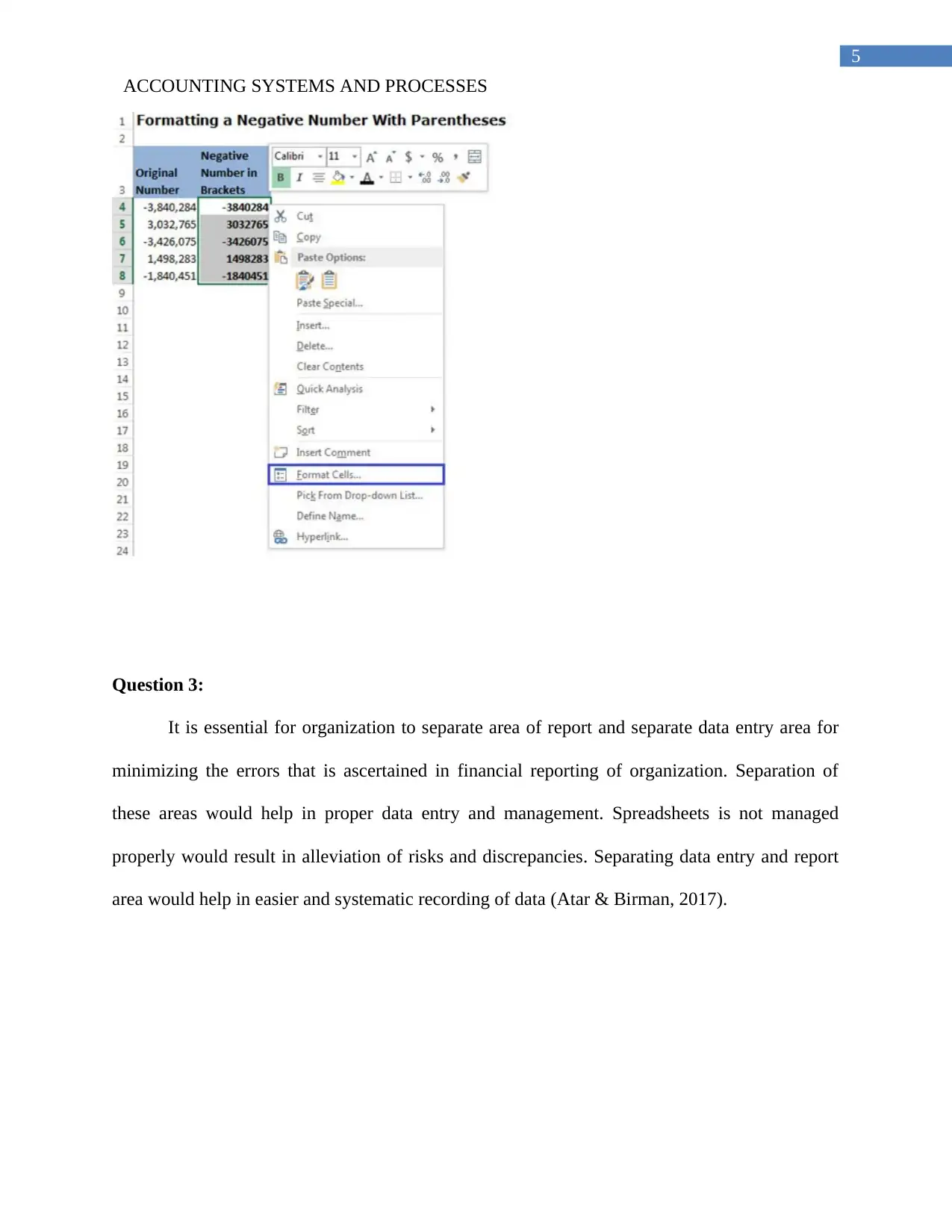
5
ACCOUNTING SYSTEMS AND PROCESSES
Question 3:
It is essential for organization to separate area of report and separate data entry area for
minimizing the errors that is ascertained in financial reporting of organization. Separation of
these areas would help in proper data entry and management. Spreadsheets is not managed
properly would result in alleviation of risks and discrepancies. Separating data entry and report
area would help in easier and systematic recording of data (Atar & Birman, 2017).
ACCOUNTING SYSTEMS AND PROCESSES
Question 3:
It is essential for organization to separate area of report and separate data entry area for
minimizing the errors that is ascertained in financial reporting of organization. Separation of
these areas would help in proper data entry and management. Spreadsheets is not managed
properly would result in alleviation of risks and discrepancies. Separating data entry and report
area would help in easier and systematic recording of data (Atar & Birman, 2017).
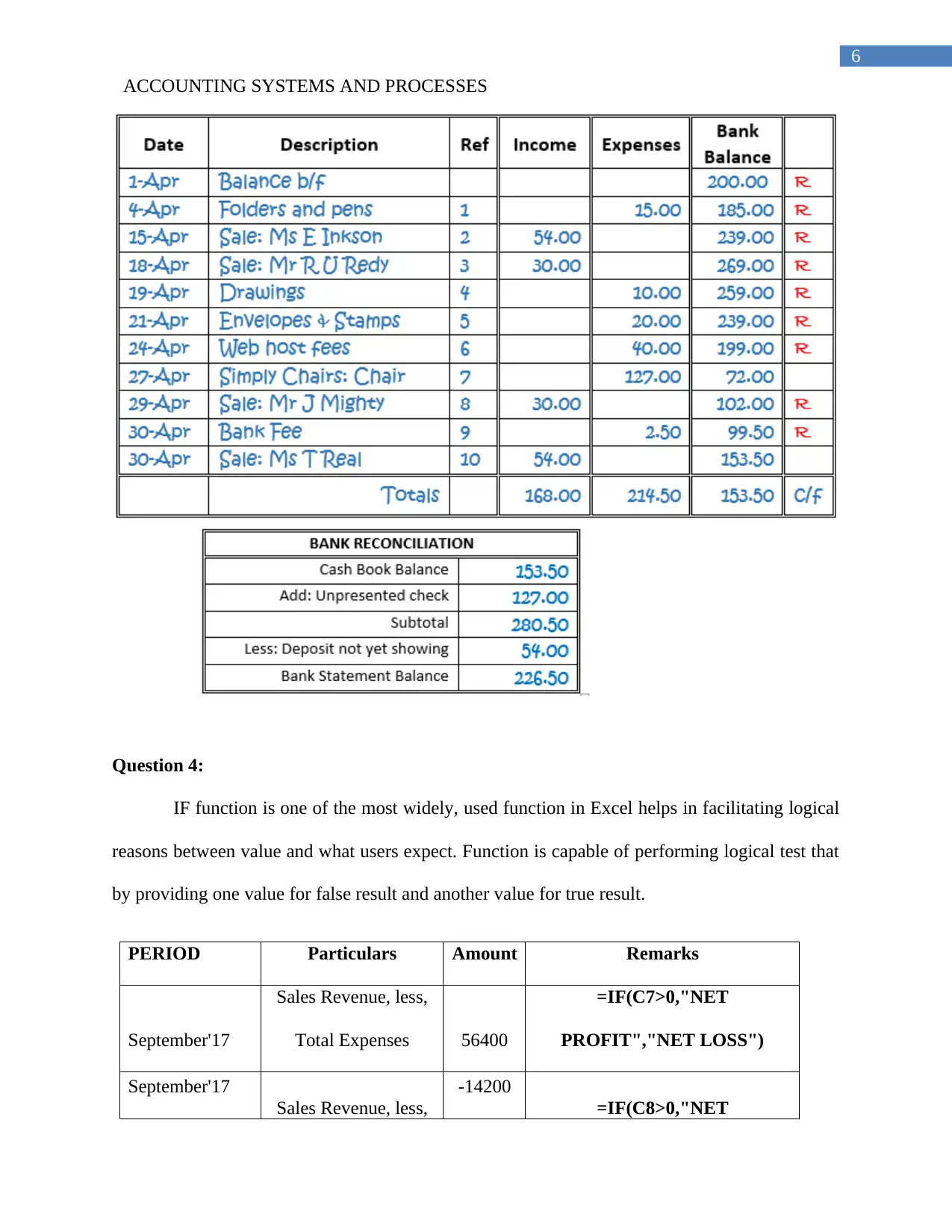
6
ACCOUNTING SYSTEMS AND PROCESSES
Question 4:
IF function is one of the most widely, used function in Excel helps in facilitating logical
reasons between value and what users expect. Function is capable of performing logical test that
by providing one value for false result and another value for true result.
PERIOD Particulars Amount Remarks
September'17
Sales Revenue, less,
Total Expenses 56400
=IF(C7>0,"NET
PROFIT","NET LOSS")
September'17
Sales Revenue, less,
-14200
=IF(C8>0,"NET
ACCOUNTING SYSTEMS AND PROCESSES
Question 4:
IF function is one of the most widely, used function in Excel helps in facilitating logical
reasons between value and what users expect. Function is capable of performing logical test that
by providing one value for false result and another value for true result.
PERIOD Particulars Amount Remarks
September'17
Sales Revenue, less,
Total Expenses 56400
=IF(C7>0,"NET
PROFIT","NET LOSS")
September'17
Sales Revenue, less,
-14200
=IF(C8>0,"NET
⊘ This is a preview!⊘
Do you want full access?
Subscribe today to unlock all pages.

Trusted by 1+ million students worldwide
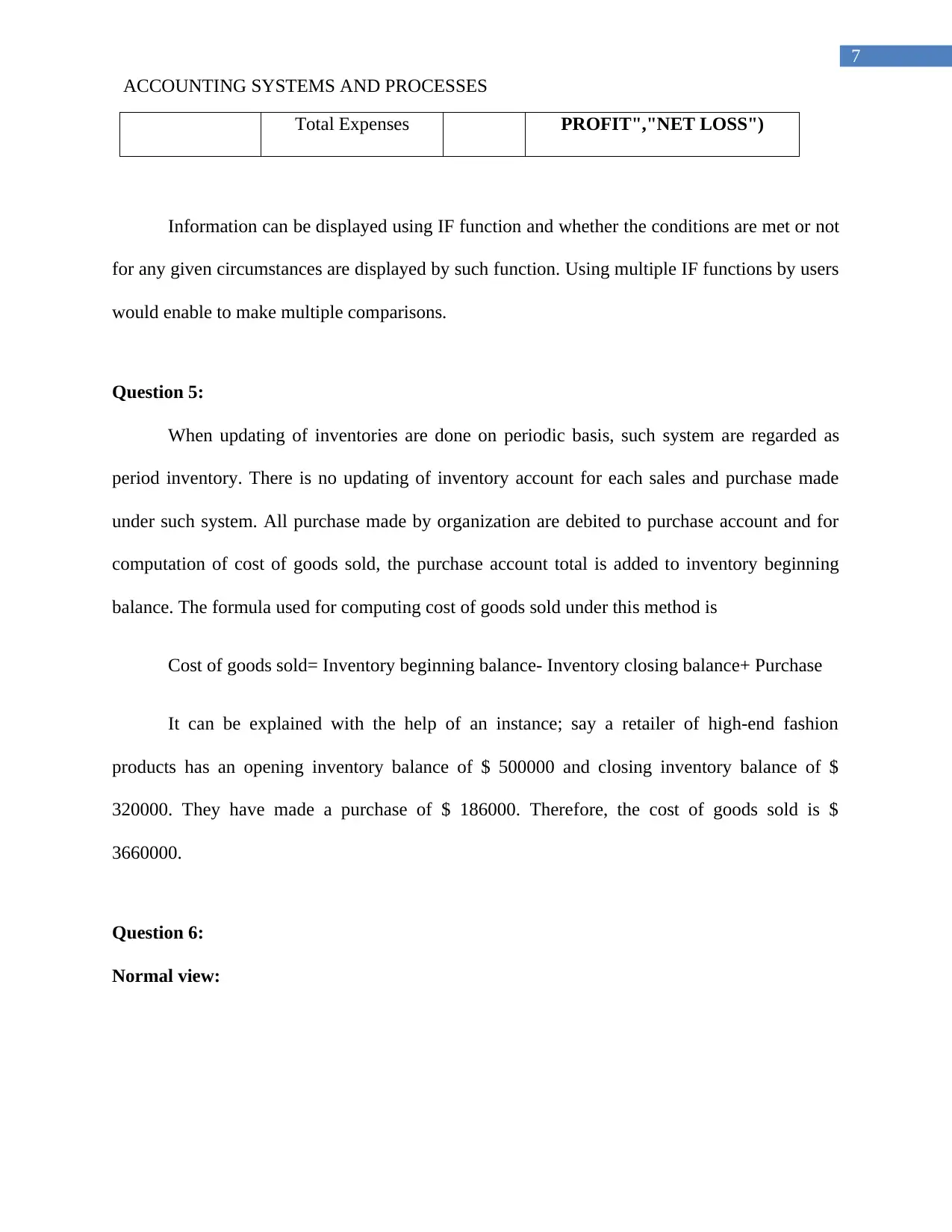
7
ACCOUNTING SYSTEMS AND PROCESSES
Total Expenses PROFIT","NET LOSS")
Information can be displayed using IF function and whether the conditions are met or not
for any given circumstances are displayed by such function. Using multiple IF functions by users
would enable to make multiple comparisons.
Question 5:
When updating of inventories are done on periodic basis, such system are regarded as
period inventory. There is no updating of inventory account for each sales and purchase made
under such system. All purchase made by organization are debited to purchase account and for
computation of cost of goods sold, the purchase account total is added to inventory beginning
balance. The formula used for computing cost of goods sold under this method is
Cost of goods sold= Inventory beginning balance- Inventory closing balance+ Purchase
It can be explained with the help of an instance; say a retailer of high-end fashion
products has an opening inventory balance of $ 500000 and closing inventory balance of $
320000. They have made a purchase of $ 186000. Therefore, the cost of goods sold is $
3660000.
Question 6:
Normal view:
ACCOUNTING SYSTEMS AND PROCESSES
Total Expenses PROFIT","NET LOSS")
Information can be displayed using IF function and whether the conditions are met or not
for any given circumstances are displayed by such function. Using multiple IF functions by users
would enable to make multiple comparisons.
Question 5:
When updating of inventories are done on periodic basis, such system are regarded as
period inventory. There is no updating of inventory account for each sales and purchase made
under such system. All purchase made by organization are debited to purchase account and for
computation of cost of goods sold, the purchase account total is added to inventory beginning
balance. The formula used for computing cost of goods sold under this method is
Cost of goods sold= Inventory beginning balance- Inventory closing balance+ Purchase
It can be explained with the help of an instance; say a retailer of high-end fashion
products has an opening inventory balance of $ 500000 and closing inventory balance of $
320000. They have made a purchase of $ 186000. Therefore, the cost of goods sold is $
3660000.
Question 6:
Normal view:
Paraphrase This Document
Need a fresh take? Get an instant paraphrase of this document with our AI Paraphraser
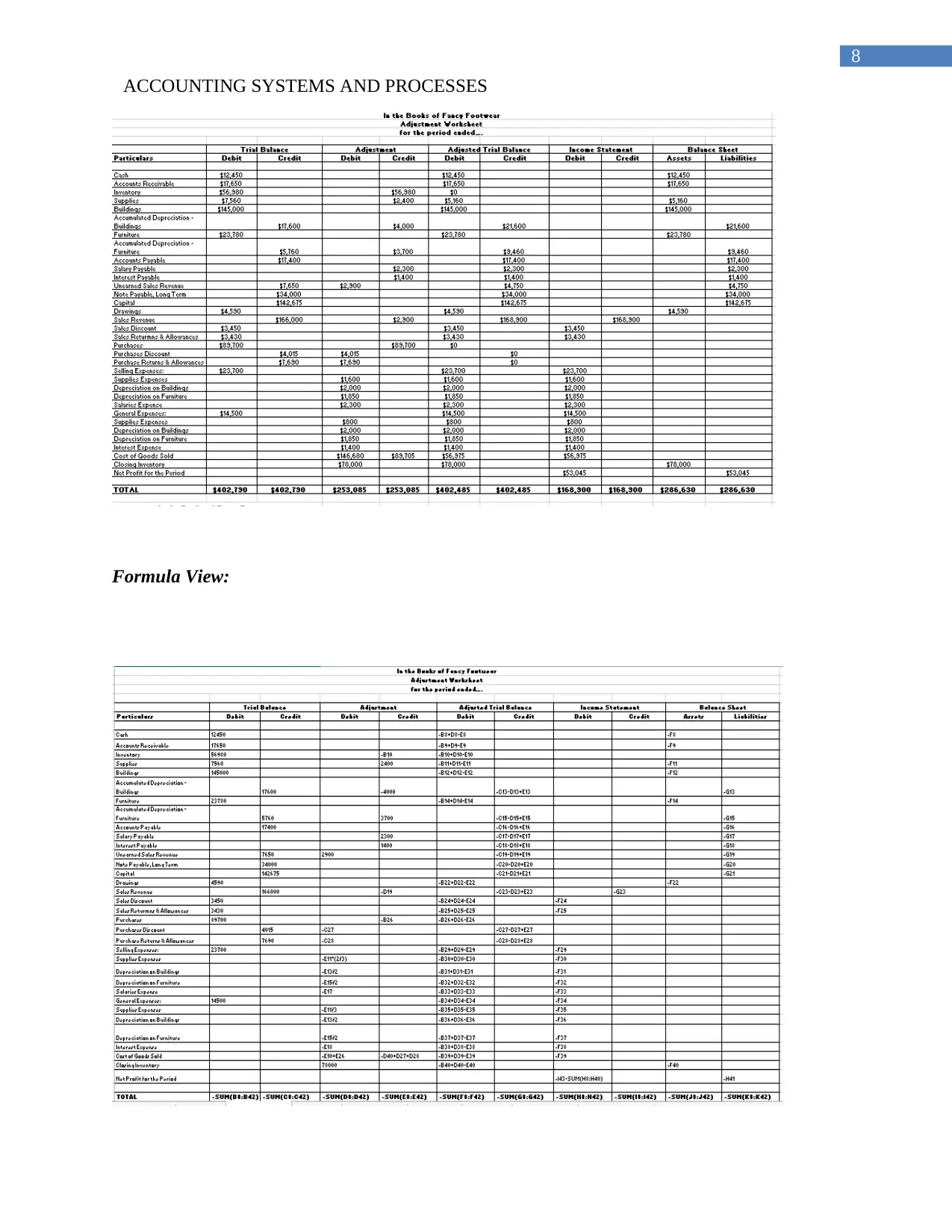
8
ACCOUNTING SYSTEMS AND PROCESSES
Formula View:
ACCOUNTING SYSTEMS AND PROCESSES
Formula View:
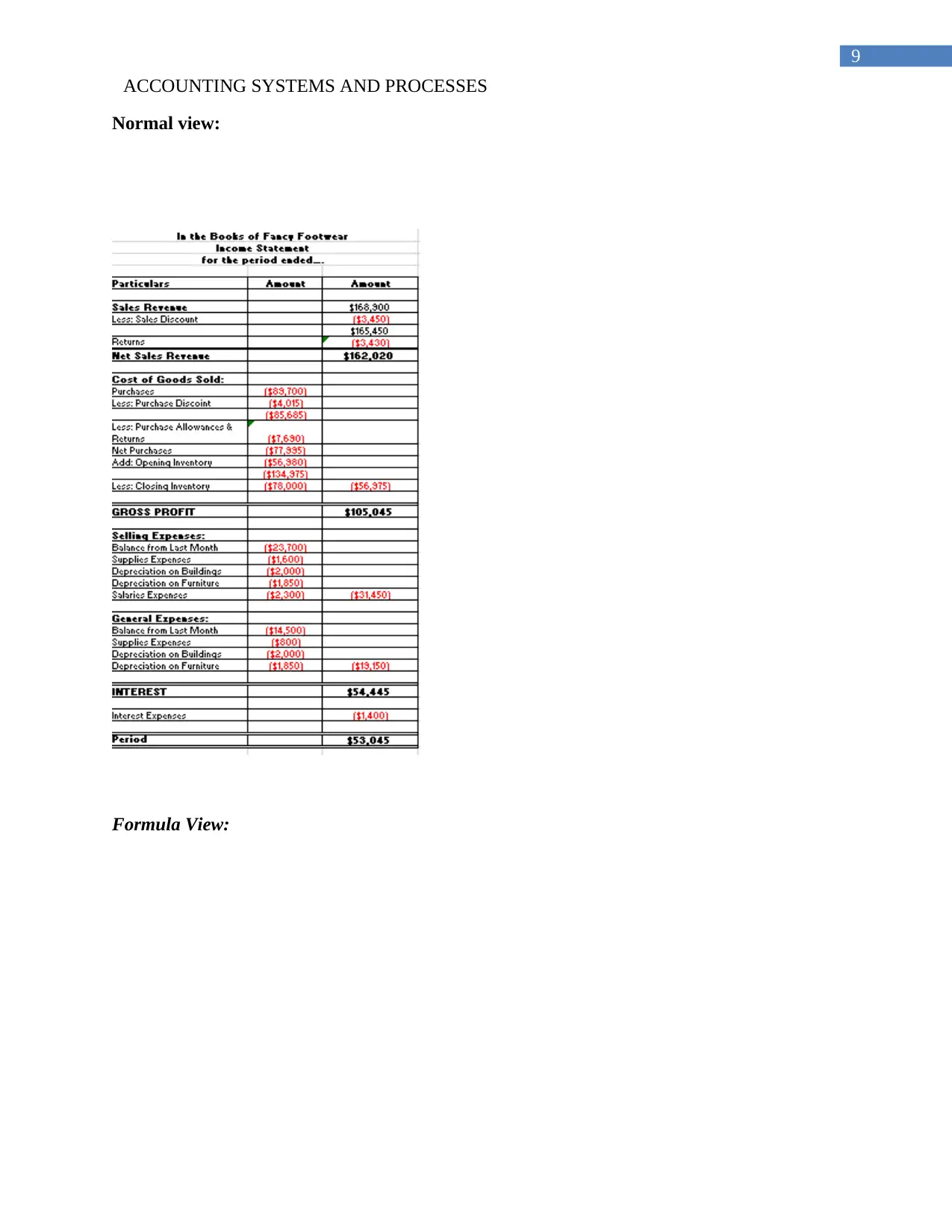
9
ACCOUNTING SYSTEMS AND PROCESSES
Normal view:
Formula View:
ACCOUNTING SYSTEMS AND PROCESSES
Normal view:
Formula View:
⊘ This is a preview!⊘
Do you want full access?
Subscribe today to unlock all pages.

Trusted by 1+ million students worldwide
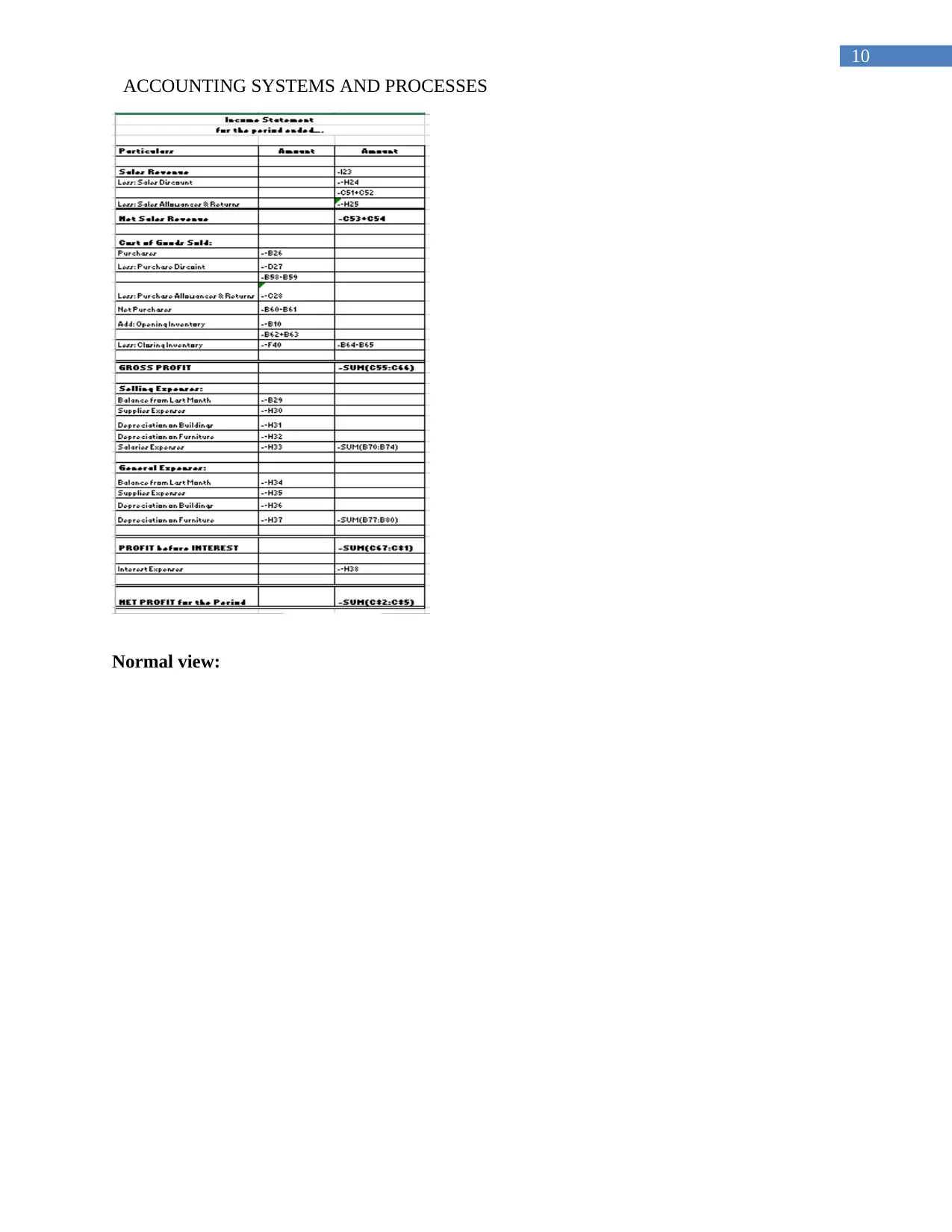
10
ACCOUNTING SYSTEMS AND PROCESSES
Normal view:
ACCOUNTING SYSTEMS AND PROCESSES
Normal view:
Paraphrase This Document
Need a fresh take? Get an instant paraphrase of this document with our AI Paraphraser
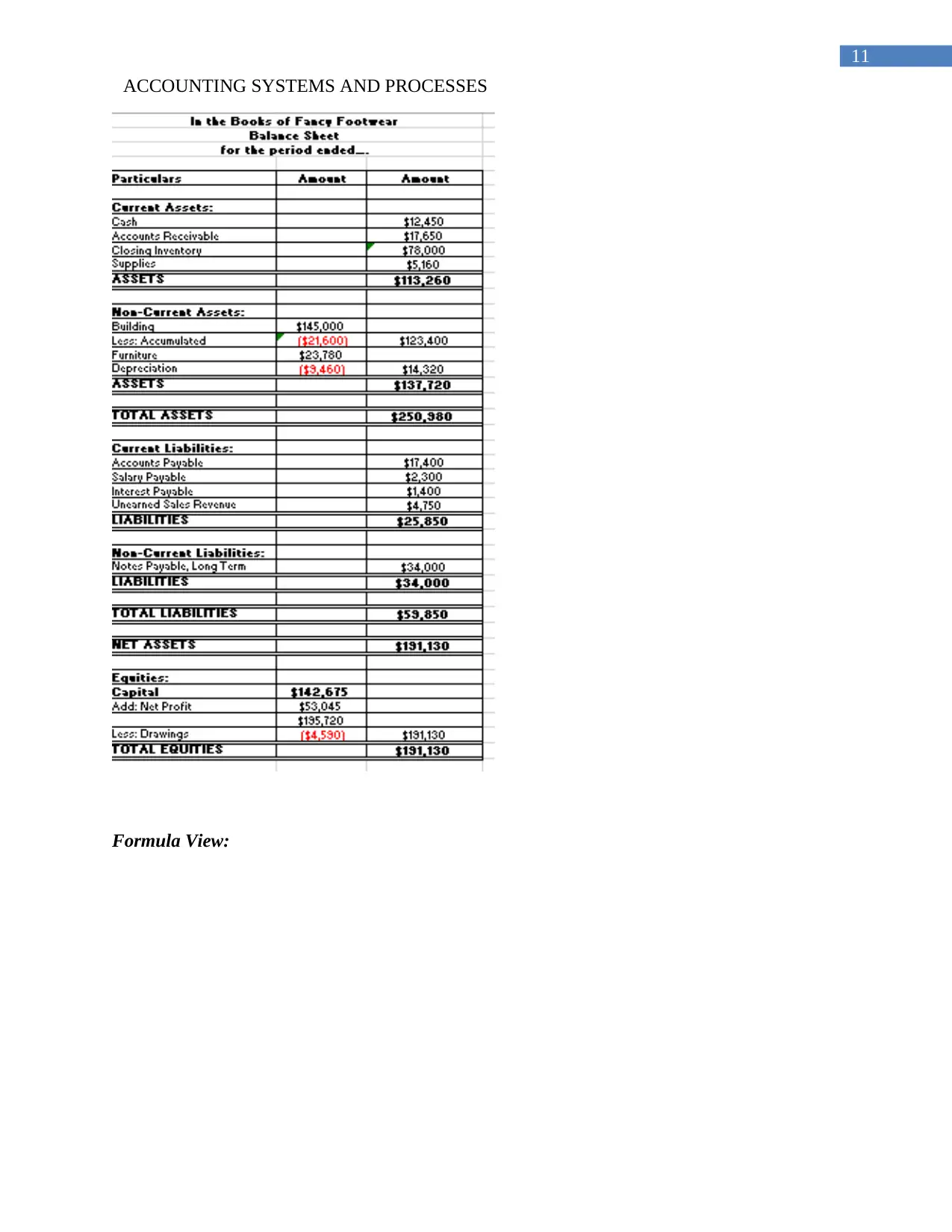
11
ACCOUNTING SYSTEMS AND PROCESSES
Formula View:
ACCOUNTING SYSTEMS AND PROCESSES
Formula View:
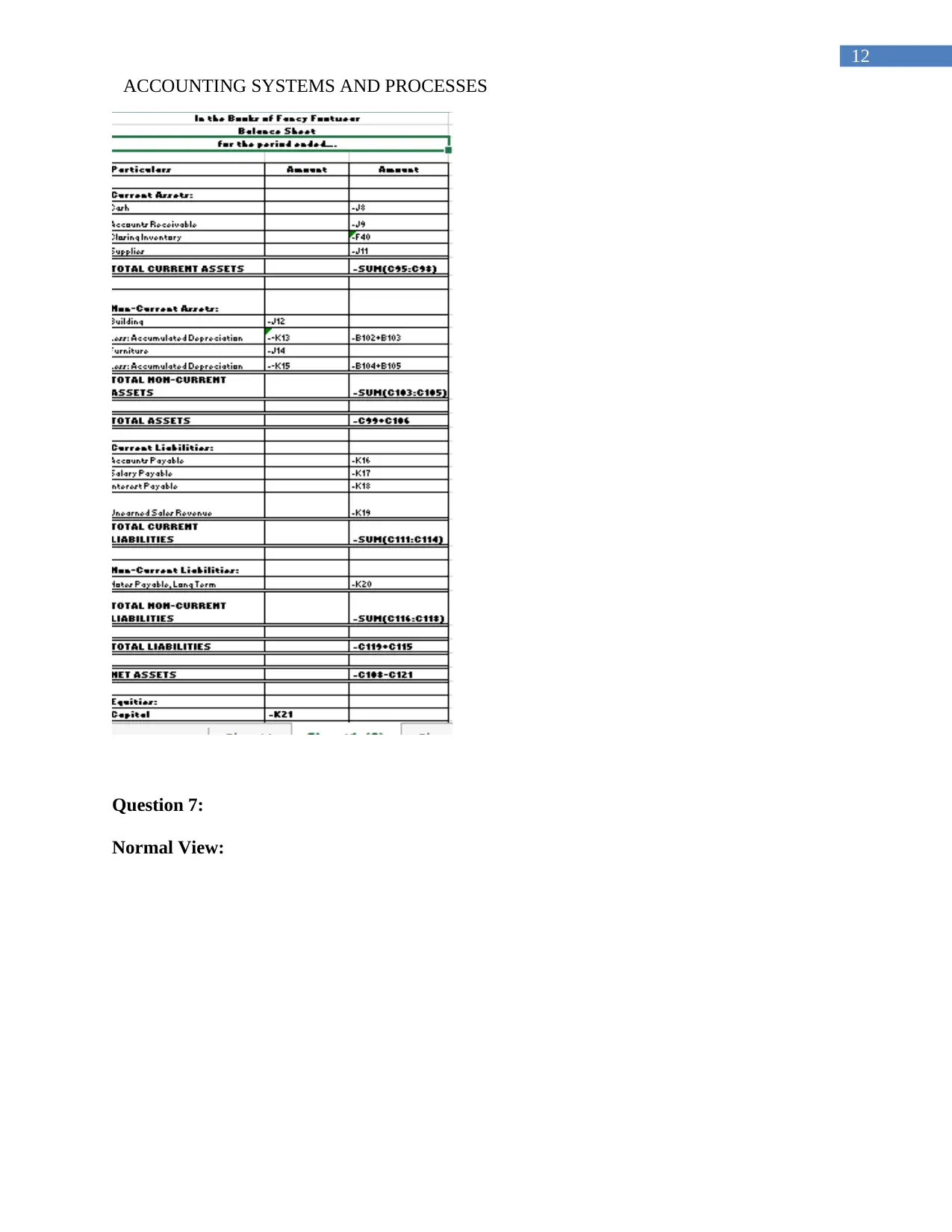
12
ACCOUNTING SYSTEMS AND PROCESSES
Question 7:
Normal View:
ACCOUNTING SYSTEMS AND PROCESSES
Question 7:
Normal View:
⊘ This is a preview!⊘
Do you want full access?
Subscribe today to unlock all pages.

Trusted by 1+ million students worldwide
1 out of 29
Related Documents
Your All-in-One AI-Powered Toolkit for Academic Success.
+13062052269
info@desklib.com
Available 24*7 on WhatsApp / Email
![[object Object]](/_next/static/media/star-bottom.7253800d.svg)
Unlock your academic potential
Copyright © 2020–2025 A2Z Services. All Rights Reserved. Developed and managed by ZUCOL.





